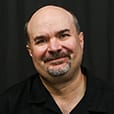

CONCORD, N.C. — Some sporting events are life-changing.
Having the skill and good fortune to win these events can change a competitor’s life forever. Likewise, coming up short in one of these classic events can be the difference between an average sports career and gaining Hall of Fame or legendary stature.
We were reminded of this while watching television coverage of old sporting events during the lockdown created because of the COVID-19 pandemic.
Golfer Chris DiMarco lost the 2005 Masters at Georgia’s Augusta National to Tiger Woods by a single shot. After that, DiMarco faded into obscurity. We couldn’t think how different his life would have been had he won by one shot.
In auto racing, we have similar events that can change a driver’s life, most prominently the Indianapolis 500 and the Daytona 500.
There’s no question that winning and losing the Indianapolis 500 can be the difference between a racer becoming an international sensation or an ordinary face in the crowd.
Takuma Sato had enjoyed a long career as a journeyman driver, funded primarily by Honda during a career in Formula One and Indy car racing, when he won at Indianapolis in 2017. Sato’s dramatic and popular victory at Indianapolis made him a hero in his native Japan and earned him stardom around the globe.
Eddie Cheever was another Formula One and Indy car veteran who had struggled to make a mark on the racing world, but that all changed when he won the Indianapolis 500 in 1998. Buddy Rice was an unlikely winner in 2004 and Buddy Lazier won during the first season of the Indy Racing League in 1996, but also finished second twice.
Like the aforementioned DiMarco, there are plenty who came ever so close to that life-altering victory at Indianapolis.
The best known of those is probably Scott Goodyear, who finished second twice and was leading when he was black flagged late during the 1995 running of The Greatest Spectacle in Racing. Today, Goodyear is as well known for his television work as he is for his racing career.
Carlos Munoz finished second to Alexander Rossi in 2016 and was runner-up to Tony Kanaan in 2013. Vitor Meira was a bridesmaid in 2005 and ’08 and Roberto Guerrero finished second in 1984 and ’87.
Winning at Indy would have had a smaller impact on legendary racer Dan Gurney, but Gurney was runner-up at Indy in 1968 and ’69. He never won the Indy 500.
Maybe the most telling example of the difference in winning and losing at Indianapolis is J.R. Hildebrand. As a rookie in 2011, Hildebrand had the lead on the final lap of the Indianapolis 500 when he hit the turn-four wall and watched helplessly as Dan Wheldon stormed past to win the race for a second time.
Since then, Hildebrand has bounced from ride to ride and has rarely had a full-time gig inside a race car.
While he enjoyed a successful Indy car career, winning the Indianapolis 500 was the missing highlight for Paul Tracy, who finished second at Indy in controversial fashion in 2002.
Other drivers, whose careers could have taken a different turn with a win at Indy include 1995 runner-up Christian Fittipaldi, Kevin Cogan (second in 1986), Bill Vukovich II (second in 1973) and Len Sutton, who was second to Rodger Ward in 1962.
A Daytona 500 victory can be as life-changing as sipping the milk at Indianapolis.
Pete Hamilton gained legendary status by winning the 1970 Daytona 500 in a Petty Enterprises machine, Derrike Cope scored one of the biggest upsets in the history of The Great American Race when he benefited from Dale Earnhardt’s flat tire in 1990 and Trevor Bayne’s short NASCAR Cup Series career will always be known for carrying Wood Brothers Racing to victory in 2011.
Others weren’t as fortunate.
Journeyman driver Charlie Glotzbach finished second to Lee Roy Yarbrough in 1969 and was runner-up to A.J. Foyt in 1972.
Current Cup Series driver Ryan Blaney, who is still early in his career, has already finished second twice at Daytona, including earlier this year. A Daytona victory would be a career maker.
Fred Lorenzen finished second to Mario Andretti in 1967, Ken Schrader was second when Darrell Waltrip won his lone Daytona 500 in 1989, Morgan Shepherd was runner-up to Davey Allison in 1992 and Casey Mears followed Jimmie Johnson home in 2006.
A Daytona 500 victory would have changed the legacy of each of these drivers.
That’s the difference between winning and losing.
